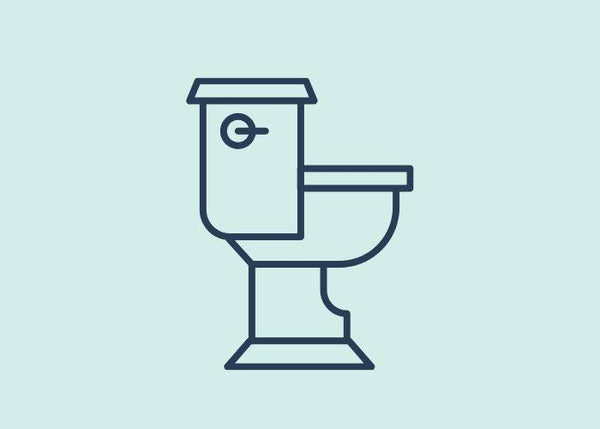The 3 components everyone should know about recurrent UTIs
Your urogenital health (that is, your vaginal health and bladder health) is all related.

While it is technically possible to have sex during a yeast infection, it can be tricky and often uncomfortable. Yeast infections, caused by an overgrowth of Candida yeast, can lead to symptoms like itching, burning, and irritation, which can be exacerbated during intimacy.

Discover the vital role the vaginal microbiome plays in our health, its impact on infections, and how to maintain balance for optimal vaginal wellness.

This guide is here to support you in understanding the differences between bacterial vaginosis, cytolytic vaginosis, and yeast infections.

Discover how vaginal probiotics differ from gut probiotics and their potential benefits for maintaining optimal vaginal health and preventing infections.

Drinking alcohol doesn’t directly cause urinary tract infections, but it can worsen the symptoms. Learn more with our helpful guide.

While vaginal itching is a common concern experienced by many, it can still be very uncomfortable to deal with. Experiencing occasional vaginal itching is perfectly normal. But if you find that the itching persists and becomes more bothersome, it's important to reach out to a healthcare professional to seek treatment.

Maintaining vaginal health isn't just about hygiene and hormones–what you eat also plays a crucial role. A balanced diet can support a healthy vaginal microbiome and help prevent infections like bacterial vaginosis (BV) and yeast infections.

Here’s everything you need to know about Colony Forming Units (CFUs).
The Vaginal Health glossary is home to the terms you may have seen while researching vaginal health information.

Urinary incontinence is a topic that doesn't get talked about enough, yet it affects millions of people around the world. Whether it's an occasional leak or a more frequent issue, incontinence can feel frustrating and inconvenient. However, understanding the different types of incontinence can help you manage your symptoms and find the best solution for you.

Learn more about the common causes of vaginal pain and discover practical solutions, including treatment options and prevention methods with this guide from Uqora.

We understand that finding support can feel challenging and isolating, that’s why the Uqora Community is here for you. We asked Dr. Carrie Aisen, a San Diego-based Urologist, to share the answers to 10 common questions she gets from her patients.

Overactive bladder, urinary incontinence, and UTIs are three different urinary health issues that share similar symptoms. However, they're actually quite different, and treatment will vary depending on diagnosis.

Overactive bladder is a urinary health condition that can affect anyone. Symptoms include a sudden urge to urinate, incontinence, and urinary frequency that can disrupt daily life. Luckily, there are treatment options available.

Understanding vaginal dryness: causes, remedies & care. Explore more at Uqora Learning Center.

Period blood can range in color, including bright red, brown, orange, and gray. The color of your period blood can tell you important things about your overall health.

Ureaplasma is a bacteria that lives in the respiratory and the urogenital parts of both males and females and is typically transmitted through sexual intercourse. If ureaplasma becomes too dominant, it can cause a UTI. Ureaplasma may not present in a standard urine culture and may go undiagnosed or be incorrectly diagnosed as Interstitial Cystitis (IC).

If you’re prone to UTIs, it doesn’t hurt to take precautions when selecting your underwear and lubricant.

The short answer is yes, it is possible to get a UTI after a hysterectomy procedure. The long answer is that a UTI after a hysterectomy may not be directly related to the procedure.

Yes, UTIs and constipation are connected. If you're experiencing constipation, it's time to take a look at your pelvic floor.

Bacterial vaginosis (BV) is an infection that causes vaginal discharge with a strong, foul odor. Many cases of BV are asymptomatic, so it’s important to know what to look for. BV can develop after having sexual contact with a new partner, and can be treated with metronidazole. BV can be a frustrating cycle; we’re here to support you in understanding how it occurs, and how to prevent future infections.

Vaginal pH and urine pH are key factors for maintaining optimum urinary health.

If you’re thinking about trying out the Ketogenic diet, go you! It’s reported to have incredible benefits, including rapid weight loss.

This guide is here to support you in understanding the differences between bacterial vaginosis, urinary tract infections, and yeast infections.

Understand how UTIs and BVs are contracted from sex and what habits to incorporate to prevent them in the future.

Learn how a UTI can cause nausea and its connection to urinary tract health in our comprehensive Uqora Learning Center guide. Discover the correlation between UTIs and nausea and effective strategies for prevention and relief.

A UTI test strip and dipstick test for leukocytes and nitrites in the urine. When your urine is nitrite positive, it likely means there’s a bacterial infection. Leukocyte negative means that the amount of white blood cells in your urine are low and not secreting leukocyte esterase, which is a compound white blood cells excrete when they’re activated, or fighting off an infection.

Many women report UTIs in conjunction with or immediately following their menstrual cycle. Read on to learn precautionary measures.

While the IUD is an incredible form of birth control that has changed many women’s lives, like any contraception, it comes with its drawbacks.

Dr. Katherine Klos is a board-certified urologist practicing in Washington, DC and a Uqora Medical Advisor. She completed her medical training at the University of Alabama and her urology residency at The George Washington University. Since graduating residency in 2012, she has developed a practice that focuses on pelvic health for both male and female patients. Dr. Klos understands the multidimensional aspects of urologic care and believes in a partnership approach to help her patients reach their goals through traditional medical therapeutics and overall wellness strategies. Dr. Klos is also active in research and developing technologies, and she serves in an advisory role at the FDA. Outside of patient care, Dr. Klos is a talented pastry chef and enjoys spending time with her three young children.

When vaginal bacteria are out of whack, it can cause a mess of pH problems including BV, yeast infections, and UTIs. Learn how vaginal pH imbalance impacts your health and how to get it back in balance.

Learn about UTIs: self-resolution possibilities, risks & guidance. Explore more at Uqora Learning Center.

Learn about the benefits, risks, and tips for having sex during your period. Discover how to make the most of this intimate time.

We’re here to support you on every step of your journey, including understanding how UTIs symptoms can show up for different people. UTIs can often feel debilitating, and adding back pain into the mix can make you feel even worse. If you notice a dull, aching pain or sharp discomfort in your back while dealing with a UTI, it's important to seek treatment from your healthcare provider. This way, you can stop the infection from becoming more severe.

A urinary tract infection (UTI) is a bacterial infection that affects any part of the urinary system, which includes the bladder, urethra, ureters, and kidneys. Common UTI symptoms include frequent urination, painful urination, blood in the urine, and more. If a UTI progresses to your kidney, you may also develop symptoms such as a high fever, chills, and nausea.

While it's physically possible to have sex with a UTI, it's generally not advised to have sex during an active UTI. Anecdotally, having sex with a UTI can feel uncomfortable. Since a UTI is an active infection of the urinary tract, it could also worsen your symptoms, and potentially introduce more bacteria into your urinary tract. It’s generally recommended to hold off on sexual activities until UTI symptoms have cleared. There are a few sexual and urinary health measures that can support you in getting proactive about your urinary health, like peeing before and after sex, and making informed choices about lubrication.

Menstrual cramps can range in severity, but there are home remedies that can help alleviate some of the pain and discomfort you may experience each month. Changes in diet, better sleep, pain relievers, heat application, and exercise may all help reduce the pain of period cramps and relieve symptoms of PMS.

Yeast infections are caused by Candida, a type of fungus or yeast, and can affect various parts of the body including the skin, mouth, and vagina. These infections occur due to an imbalance in the body’s natural microbes, exacerbated by factors like antibiotics, hormonal changes, and a weakened immune system.

Interstitial Cystitis (IC) affects an estimated 3 to 8 million females in the United States (1). Yet still, bladder health is severely under-researched so there is no known cure for IC at this time. Although there is no cure for IC, there are a few known lifestyle changes that can help relieve symptoms of IC.

Sex is a common trigger of both urinary tract infections (UTIs) and bacterial vaginosis (BV), so an increase in sexual activity can therefore increase your risk of UTIs. It’s important to note that UTIs are not a sexually transmitted infection (aka you are not passing a UTI from one partner to another).

Talking about UTIs isn't always easy, but it can be. Discover tips for discussing recurrent UTIs with partners, loved ones, and colleagues.

Here's what to expect on the day of your cystoscopy. A cystoscopy is done to visually inspect the bladder and the urethra.

As your body’s estrogen level begins to decline in the years leading up to and after the menopause transition, your vaginal and urinary health may also be impacted.

Determining urinary frequency or overactive bladder (OAB) needs to take into account volume of fluid, type of fluid, diet, bowel pattern, stress/social factors, medication and the skeletal muscles of your pelvic floor, all of which affect urination.

Pelvic floor therapy includes a series of exercises to strengthen the pelvic floor and can help with urinary health issues. Read how to do some pelvic floor exercises at home from an actual pelvic floor physical therapist.

Dr. Alyssa Dweck, M.D. is a practicing gynecologist in Westchester County, New York. She specializes in women's health, sexual health and menopause.

Dr. Payal Bhandari, M.D. is a leading practitioner of integrative functional medicine and the founder of SF Advanced Health.

Pelvic floor exercises, or Kegel exercises, strengthen your pelvic floor and improve bladder control.

Evidence says that, yes, physical therapy can help prevent recurring UTIs.

Here's what you can expect at your first pelvic floor physical therapy appointment.